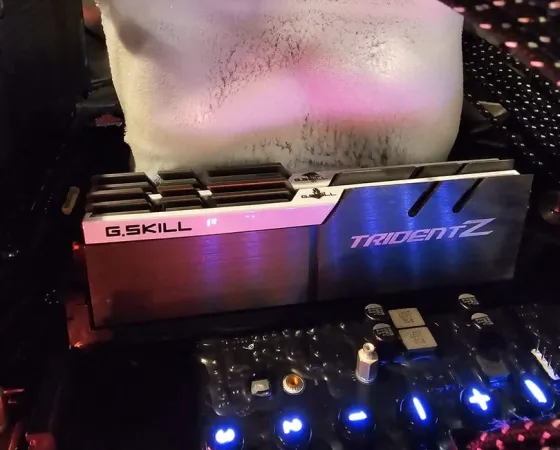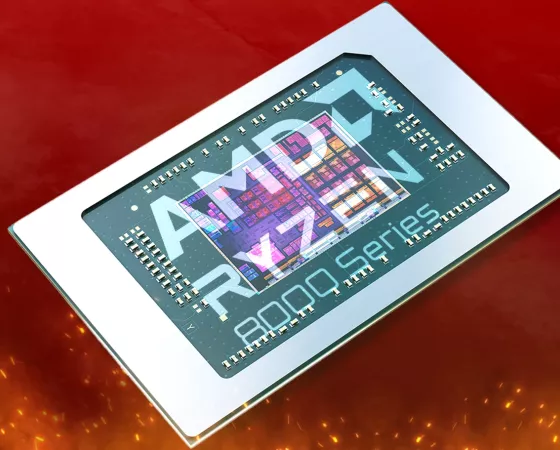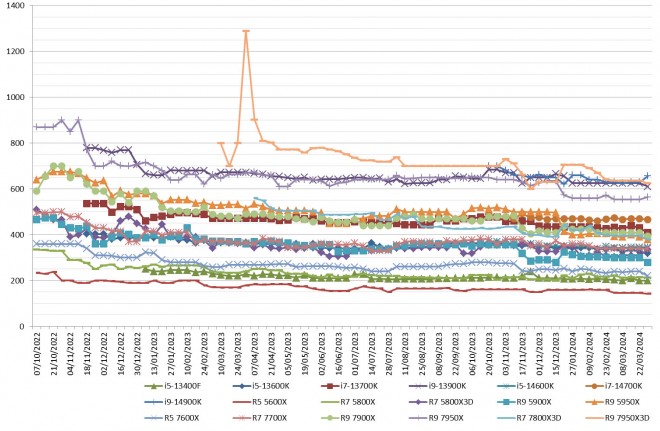Blue Origin Successfully Launches Six Passengers to the Edge of Space
Read more of this story at Slashdot.
Read more of this story at Slashdot.
Read more of this story at Slashdot.
 Dans le monde de l'overclocking extrême, le benchmark de mémoire vive qui a le vent en poupe en ce moment est PYPrime, que ce soit en mode 2B ou 32B. Les adeptes de records vont ainsi comme toujours valider leurs records sur HWBOT et jusqu'à cette semaine c'était l'incontournable safedisk qui posséd...
Dans le monde de l'overclocking extrême, le benchmark de mémoire vive qui a le vent en poupe en ce moment est PYPrime, que ce soit en mode 2B ou 32B. Les adeptes de records vont ainsi comme toujours valider leurs records sur HWBOT et jusqu'à cette semaine c'était l'incontournable safedisk qui posséd...
Read more of this story at Slashdot.
Read more of this story at Slashdot.
Read more of this story at Slashdot.
Read more of this story at Slashdot.
 La plateforme AMD AM5 compte officiellement deux nouveaux processeurs dans ses rangs, ça y est. Nous parlons bien entendu des Ryzen 7 8700F et Ryzen 5 8400F, dont nous vous avons parlé assez longuement les 12 avril puis 27 avril 2024. Nous n'allons pas revenir en long en large et en travers sur les...
La plateforme AMD AM5 compte officiellement deux nouveaux processeurs dans ses rangs, ça y est. Nous parlons bien entendu des Ryzen 7 8700F et Ryzen 5 8400F, dont nous vous avons parlé assez longuement les 12 avril puis 27 avril 2024. Nous n'allons pas revenir en long en large et en travers sur les...

Pour les prix des CPU cette semaine, on commence chez les bleus, avec d'abord une belle baisse sur le 13700K qui passe de 426 à 408 euros, il fait donc 18 euros. Ensuite, nous avons le 14700K qui augmente, de son côté, de 6 petits euros. On peut donc passer chez les rouges, c'est rapide... […]
Lire la suiteRead more of this story at Slashdot.
 Vous avez un petit budget mais rêvez d'un écran gaming d'une diagonale de 27 pouces, avec une définition QHD (2560 x 1440 pixels), réactif bien entendu et doté d'une dalle IPS ? On arrive généralement à en dégoter juste sous la barre des 200 € avec un peu de patience lors d'offres ponctuelles mais l...
Vous avez un petit budget mais rêvez d'un écran gaming d'une diagonale de 27 pouces, avec une définition QHD (2560 x 1440 pixels), réactif bien entendu et doté d'une dalle IPS ? On arrive généralement à en dégoter juste sous la barre des 200 € avec un peu de patience lors d'offres ponctuelles mais l...

Semaine chargée une nouvelle fois avec des tests assez variés, même si la mémoire et les alimentation sont en double bonus, plus un retour sur notre visite des bureaux MSI à Taiwan. On se pose, et on fait le point ! […]
Lire la suite La marque Thermalright, qui était la référence mondiale en matière de ventirad CPU au début des années 2000, commence à de nouveau avoir le vent en poupe alors que le monde du hardware se rend progressivement compte qu'elle propose parmi les meilleurs refroidisseurs CPU du marché, alors que ses tari...
La marque Thermalright, qui était la référence mondiale en matière de ventirad CPU au début des années 2000, commence à de nouveau avoir le vent en poupe alors que le monde du hardware se rend progressivement compte qu'elle propose parmi les meilleurs refroidisseurs CPU du marché, alors que ses tari...